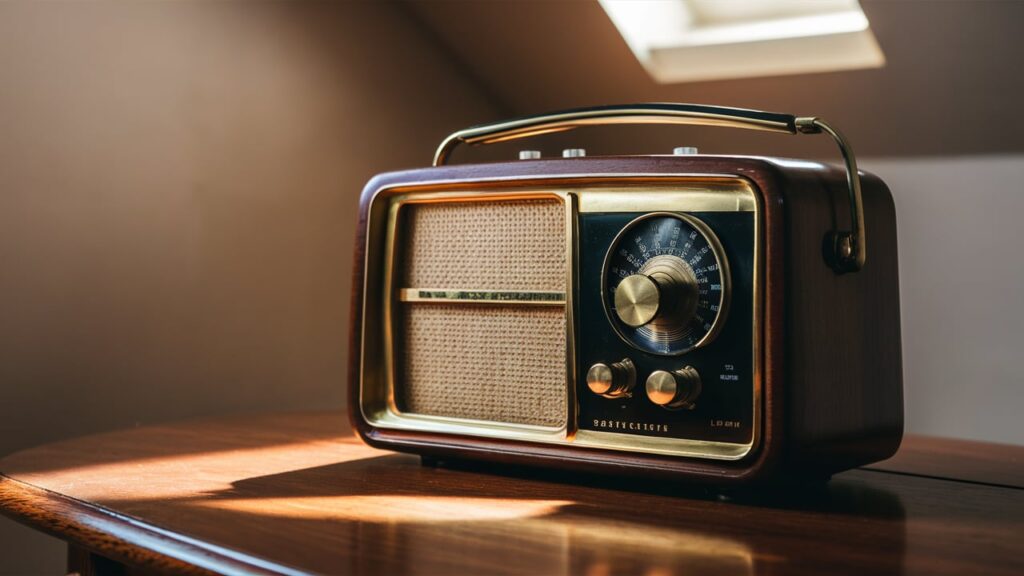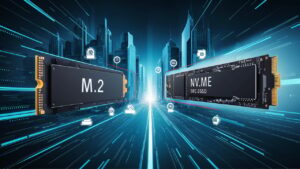A hand crank radio works by converting mechanical energy from hand-cranking into electrical energy to power the radio. This portable device is equipped with a dynamo that generates electricity when the crank is turned, storing it in a rechargeable battery for later use.
In case of emergencies or when traditional power sources are unavailable, a hand crank radio provides a reliable way to stay informed and connected. Not only is it eco-friendly, but it also ensures functionality in off-grid situations. The simple yet effective design of a hand crank radio makes it a valuable tool for outdoor adventures, survival scenarios, and disaster preparedness kits.
Introduction To Hand Crank Radios
A hand crank radio is a device that uses mechanical energy to generate power for receiving and transmitting radio signals. These radios have been around since the early 20th century and were commonly used during World War II. The hand crank mechanism allows users to generate power by manually turning a crank, which in turn powers the radio. In modern times, hand crank radios are still relevant, especially in emergency situations where access to electricity may be limited. These radios often come equipped with additional features such as built-in flashlights and USB chargers, making them a valuable tool for communication and survival during emergencies.
Basic Components Of A Hand Crank Radio
Hand crank radios are a great emergency tool to have, as they don’t rely on batteries or electricity. They work by utilizing three basic components: an internal generator, a rechargeable battery, and a radio receiver.
The internal generator is the key component that allows the radio to operate without external power sources. When the hand crank is turned, it generates electricity, which is then stored in the rechargeable battery. This stored energy can be used to power the radio receiver.
The rechargeable battery acts as a power reservoir, storing the energy generated by the hand crank. It ensures that the radio can still function even when the hand crank is not being turned. This battery can be charged using the hand crank or other external power sources.
The radio receiver is responsible for receiving and converting radio signals into sound. It allows users to tune into different frequencies and listen to various radio stations. By combining these three components, hand crank radios provide a reliable and independent means of communication in emergency situations.
The Science Behind Hand Cranking
Hand crank radios work by converting mechanical energy into electrical energy. When the crank is turned, it spins a small generator inside the radio, creating electricity. This electricity is then stored in a rechargeable battery, allowing the radio to be used even when the crank is not being turned.
Another key component of hand crank radios is electromagnetic induction. This process occurs when the generator inside the radio uses magnets and coils of wire to create an electric current. As the crank turns, it causes the magnets to move past the coils, inducing an electric current. This current is then used to power the radio and charge the battery.
Hand Crank Mechanism Explained
A hand crank radio operates on the principle of converting mechanical energy into electrical energy. The hand crank mechanism, also known as a dynamo, is the key component responsible for this conversion. When the crank is turned, it rotates a set of gears, which in turn spins a magnet inside a coil of wire. This movement generates an electric current through electromagnetic induction. The generated electricity is then stored in a rechargeable battery or capacitor for later use.
The gears play a crucial role in the hand crank mechanism. They help in multiplying the rotational speed and torque produced by the hand crank, making it easier for the user to generate sufficient energy. The cranking motion is typically achieved by using a handle attached to the gears, allowing the user to rotate the crank effortlessly.
Energy storage is a vital aspect of hand crank radios. The generated electrical energy needs to be stored for times when the radio is in use but the hand crank is not being turned. This is achieved through the use of rechargeable batteries or capacitors, which can store and release electrical energy as needed.
Overall, hand crank radios offer a reliable and portable solution for accessing information and entertainment, particularly in situations where access to electricity is limited or unavailable.
Radio Waves And Reception
Hand crank radios work by using a built-in generator to create electricity when the crank is turned. This electricity powers the radio’s circuits and allows it to receive and amplify radio waves. The radio’s antenna picks up radio wave signals from the air and converts them into electrical signals. Tuning the signal involves adjusting the radio’s frequency to match the frequency of the desired radio station. This allows the radio to receive and play the station’s broadcast. The antenna’s function is crucial for capturing radio waves, while tuning ensures the radio can receive and play the desired signals.
Additional Features In Hand Crank Radios
Hand crank radios offer additional features such as built-in flashlights, USB ports for charging devices, and solar panels for alternative power sources. These radios work by converting mechanical energy from hand cranking into electrical energy, ensuring a reliable source of communication during emergencies or outdoor adventures.
Hand crank radios operate by converting mechanical energy into electrical power through a dynamo. This energy is stored in a rechargeable battery. Additional features such as a built-in flashlight and emergency sirens provide versatility during power outages. Some models also come with USB charging ports for conveniently powering up electronic devices. These radios are ideal for emergency preparedness kits and outdoor adventures, providing a reliable source of communication and light. The versatility and functionality of hand crank radios make them a valuable tool for staying connected and safe in various situations.
Sustainable Aspect Of Hand Crank Radios
Hand crank radios operate by converting mechanical energy from the hand crank into electrical energy, which powers the radio. These radios are sustainable as they don’t rely on batteries or electricity, making them ideal for emergency situations and outdoor activities.
The hand crank mechanism offers a reliable and environmentally friendly way to stay connected.
| Sustainable Aspect of Hand Crank Radios |
| Eco-Friendly Energy: Hand crank radios generate power through manual rotation. |
| Emergency Preparedness: They are ideal for power outages and natural disasters. |
Choosing The Right Hand Crank Radio
Key Specifications:
When choosing a hand crank radio, focus on durability and reliability. Ensure it can withstand rough conditions and has a long battery life. Look for multiple power sources for versatility.
Maintenance Tips For Longevity
Regular care is essential for hand crank radios. Clean the device regularly to prevent dust buildup. Ensure the crank mechanism is free of debris. Troubleshooting common issues may include checking the battery or crank connection. Make sure to store the radio in a cool, dry place to maintain its longevity.

Impact On Emergency Communication
A hand crank radio works by using mechanical energy from the hand crank to generate electricity, which powers the radio. This makes it an ideal tool for emergency communication during disasters when regular power sources are unavailable. Hand crank radios have a significant impact on disaster management, providing a reliable means of accessing important information and staying connected with emergency services. They are commonly used by community organizations and for outdoor activities such as camping, hiking, and boating, ensuring that individuals can stay informed and connected in remote locations. Additionally, the portability and independence from external power sources make hand crank radios a valuable tool for emergency preparedness and response.
Frequently Asked Questions
How Does A Hand Crank Radio Work?
When the hand crank is turned, it generates electricity, which is used to power the radio. The radio then converts the electrical energy into sound waves, allowing you to hear radio broadcasts.
How Long Does A Hand Crank Radio Last?
The lifespan of a hand crank radio depends on the quality of the product and how often it is used. Generally, a well-made hand crank radio can last for several years if it is properly maintained.
Can A Hand Crank Radio Charge A Phone?
Some hand crank radios come with a USB port that allows you to charge your phone or other devices. However, it is important to note that the charging time will vary based on the quality of the radio and the amount of energy stored in the battery.
Is A Hand Crank Radio Waterproof?
Not all hand crank radios are waterproof. If you plan to use your radio in wet or rainy conditions, it is important to choose a model that is specifically designed to be water-resistant.
Conclusion
A hand crank radio works by converting mechanical energy into electrical energy. This device is a great addition to any emergency kit, as it doesn’t rely on batteries or electricity to function. By simply turning the crank, you can power the radio and receive important updates during power outages or other emergencies.
With its simplicity and reliability, a hand crank radio is a must-have for anyone looking to stay informed and prepared.








